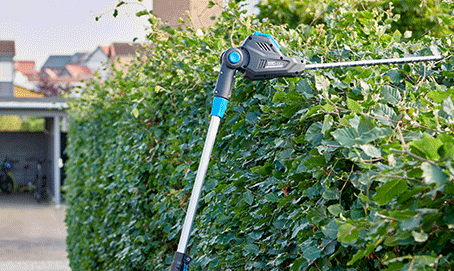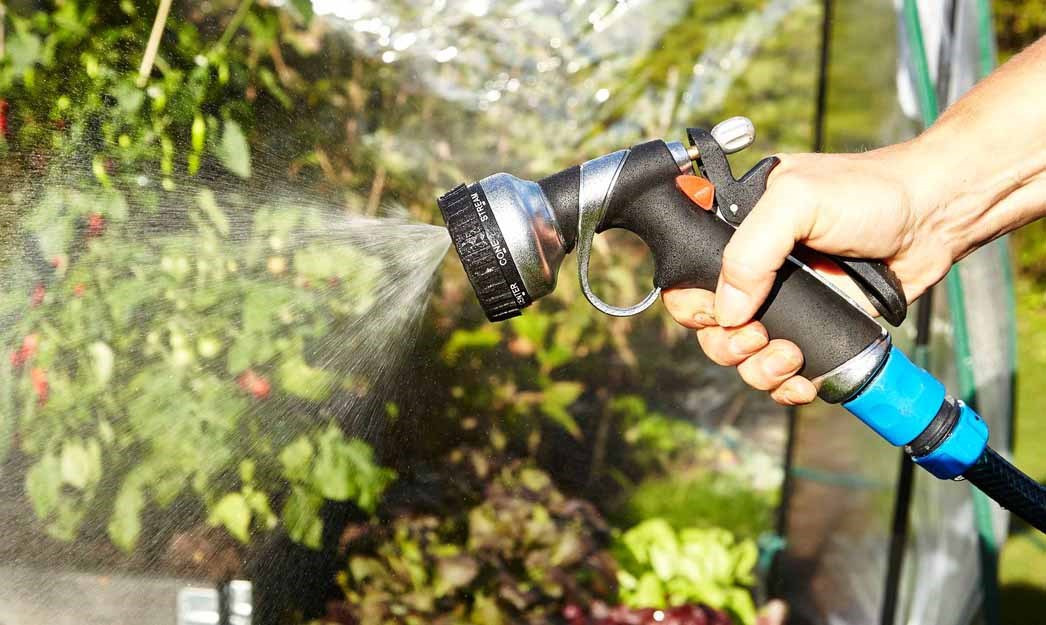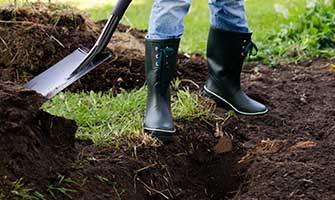Guide to pre-sprouting vegetables
“If you want to get off to a good start in the garden in spring, it is a good idea to pre-sprout. This helps the small seeds get started so that they do better when planted out in the garden, where the weather can fluctuate a great deal.”
Home cultivation is a relaxing hobby for many, and it’s something you can do, too. On this page, we have compiled a detailed guide containing general knowledge and good tips so you can get started with pre-sprouting. Also, you can learn more about which vegetables are easiest to start with, so you can enjoy good successes.
What is pre-sprouting?
It all starts with a small seed. A seed that must have the right conditions to grow large and strong enough to grow vegetables. The seed is sown in a small pot or tray, and then it just needs time to grow before being transplanted into a larger pot or flowerbed. Pre-sprouting, depending on the type, can be complicated, which is why many choose to buy vegetable plants that have already been germinated. But if you start with a simple vegetable seed and thoroughly research how to do it, pre-sprouting can be a good and rewarding experience.
When should I pre-sprout?
Pre-sprouting should typically be done in spring, since it takes time for the vegetable plant to grow large enough for transplanting – but it really depends on the plant. The months in which you can start which pre-sprouting processes are shown below. Note that the seed bags also contain information on when they should be pre-sprouted and transplanted.
- January and February: You can start pre-sprouting artichoke and chili as early as January and February. This is due to their resistance to cold and that they require a long season. In late February or early March, you can pre-sprout seed potatoes if you want to harvest potatoes a little earlier in the season.
- March: In March, when temperatures have risen slightly, there are more opportunities for pre-sprouting. You can, among other things, pre-sprout cabbage cultivars, such as broccoli, white cabbage, cauliflower, kale, pointed cabbage, Lacinato kale, and red cabbage, as well as celery, onions, leeks and tomatoes.
- April: If you want to grow cucumbers, squash, corn, pumpkins and various herbs, you should start in April. These seeds germinate quickly, and it is therefore unnecessary to begin earlier, since you cannot transplant them to the garden or greenhouse yet anyway.
- May: In May, your pre-sprouted plants can be moved outside, since there is very little likelihood of sub-zero temperatures. Many vegetable plants cannot withstand frost, and they should they not be planted outside too early. However, if there is unexpected frost, you can try to cover them with fibre cloth, which in some cases offers enough protection so that the plant survives.
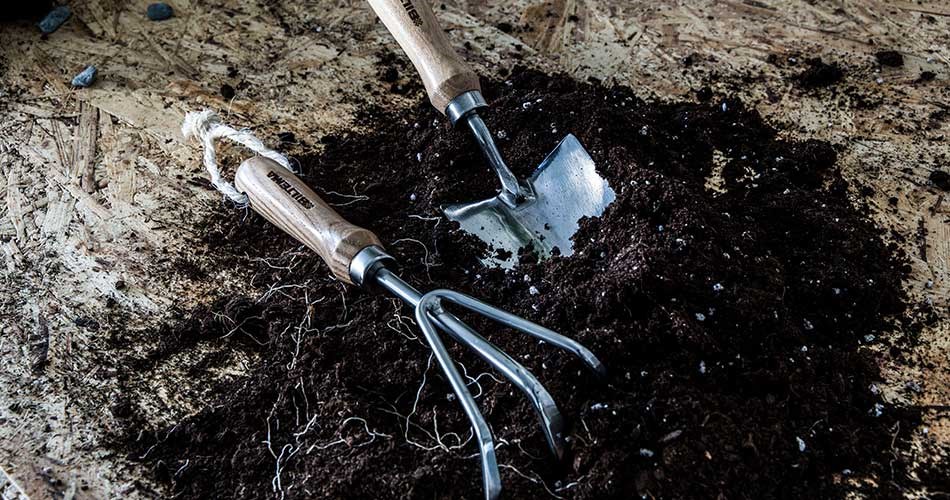
Pre-sprouting in pots or sprouting boxes
It is optimal to pre-sprout your plants inside, as you can control how much heat, light, and water they get, which is crucial for their growth. If you have some small pots stored away in a shed, you can use them for your pre-sprouting. You can also buy pre-sprouting trays or sprouting boxes, which have several small compartments and allow you to pre-sprout many plants at once. The sprouting box usually comes with a transparent lid, which helps to keep the heat in, just like in a greenhouse.
Advantages of pots
There are several advantages to pre-sprouting in pots. For example, the seed has more room to germinate, and this can ensure faster pre-sprouting. In addition, you do not need to transplant before your plant moves outside. If you use a sprouting box, it may be necessary to transplant into larger pots several times before they are the plants can move outside.
So the fewer times you transplant, the better. It is also much easier to remove your plant from a pot with all the roots intact, since you can turn it upside down and push the plant out. You can’t do that with a sprouting box.
Advantages of sprouting boxes
However, sprouting boxes also have their advantages. First, it is easier for you to create good growing conditions due to the plastic cover, which retains moisture and heat. This is especially favourable for seeds that require high temperatures.
In addition, sprouting boxes contribute to efficient use of space, as you can have 5, 10, 20 pre-sprouts going at the same time – in very little space. These take up almost no space compared to the corresponding number of pots. It can be an advantage to buy several sprouting boxes so that you can more easily take address their individual needs. Be sure to place seeds with the same growth needs in the same sprouting box.
When pre-sprouting goes wrong
If you have previously tried to pre-sprout, then you have probably also experienced failed projects. Maybe the seedling died before it grew big, or maybe a plant didn’t sprout from your seed at all. It’s a pity – but all you can do is try again. The main cause of unsuccessful germination is lack of proper care, such as too much or too little water and light. It may also be that the seed is placed too deep.
The seeds have different preferences, and they often require different amounts of water and sunlight. Therefore, it is important that you start by carefully studying the individual needs of the seeds so that you can meet them in the best possible way. Then your future pre-sprouting projects will be more likely to succeed. Later in the guide, you can read more about what each seed needs.
Choose the right soil: Seed-starting soil
Choosing the correct soil is essential for successful pre-sprouting. The soil should be disease-free, light, and contain very little or no fertiliser. It is important that you use a light soil, since the young roots, which are not very strong, must be able to penetrate the soil. Avoid fertiliser as much as possible, as fertiliser can scorch the plant roots. Seed-starting soil is clearly the best soil for pre-sprouting, and you can usually buy it at the same place you buy your seeds.
Note: Never use excess potting soil for your plants, as this soil has growth-inhibiting properties for seeds and pre-sprouting.
How to grow easy vegetables in Denmark
Although many vegetables require a lot of time, patience and green fingers, some are more forgiving and easier to grow than others – even in the Danish climate. If you do not have much experience with pre-sprouting and cultivation, it may therefore be an advantage to start with some of the easy vegetables for planter boxes and greenhouses. That way, you can ensure some success and keep your motivation high.
Potatoes: Easy and sure vegetable
Potatoes are a big part of Danes’ meals, and we have grown them in Denmark since the 1600s. Potatoes are one of the easiest vegetables to pre-sprout and grow in Denmark. However, it requires that you have space.
Pre-sprouting potatoes
Pre-sprouting potatoes is different to other vegetables, since you use seed potatoes instead of seeds. Buy a bag of seed potatoes and put them in a box or tub with enough space around and adequate light. In addition, the area should be cool. Over the course of a month, small sprouts will slowly grow out of the potatoes, and then they can be planted in the ground. 1-2 centimetres is a good length – if they get longer, there is a chance that they will break when they are planted in the ground.
Before you plant the potatoes in the ground, be sure to give your kitchen or raised bed plenty of compost or fertiliser, so that the potatoes get the most nutrition to grow. It is also always a good idea to cover the area a few weeks in advance to warm up the soil.
Planting potatoes
If you want to plant early potatoes in March, they should be planted with 40 centimetres between the rows and 30 centimetres between each potato in the same row. Remember that the plants grow large during the 80-100 days before the potatoes are ready. Late potatoes, laid in mid-April, require more space. Here you need 35 centimetres between each plant in a row and 50-60 centimetres between the rows. Also, potatoes should be planted at a depth of 10-15 centimetres.
Squash and pumpkin: Fun and easy alternatives
The squash plant is easy to grow and yields an incredible harvest in the summer. You can therefore settle for a few squash plants so that you get an appropriate amount. The pumpkin plant has the same characteristics when it comes to pre-sprouting and cultivation process, but these are only harvested during the autumn and require a loving hand during the process to succeed.
Pre-sprouting squash and pumpkin
Start pre-sprouting the squash and pumpkin seeds in April in either a pot or a sprouting box. It’s always a good idea to plant many seeds – more than you need – in case some of them die.
Place the seed at a depth of about 2 centimetres in good and moist soil. The soil must be constantly kept moist so that the seed does not dry out. After a week or so, you will be able to see the plant shoot up, and after a few weeks the plant will be large enough to plant outside. Keep an eye out for when the squash and pumpkin plants have three large leaves – because then they are ready.
Planting squash and pumpkin
Squash and pumpkin plants cannot tolerate frost, so wait to plant them in the ground until you are sure that there will be no more frost. If you have more than one plant, make sure that there is at least 1 metre between them, as they grow very big. Pumpkin plants tend to grow stems that are several metres long and that wind and curl in different directions. Make sure they get plenty of water, especially on very hot days, and keep a lookout for dried leaves.
Kale: A rewarding and grateful plant
Kale is a robust and hardy plant that thrives in the Danish climate and can be harvested all winter. It is incredibly nutritious and yields plenty of harvest during late summer and autumn – it is therefore a great addition to your vegetable garden. You don’t need many kale plants to get a good harvest, as they grow both large and full-bodied.
Pre-sprouting kale
You can easily sow your kale seeds directly into the ground outside, just like many other seeds. But pre-sprouting indoors will ensure a better result and better growing conditions for the seed. Start your pre-sprouting in March so that you can plant your kale after five to eight weeks. Place your seeds at a depth of 2 centimetres and keep a close eye on the temperature during the pre-sprouting process – it should preferably not exceed 20 degrees. Higher temperatures make it difficult for the sprouts to grow.
Planting kale
When the plants move outside into the vegetable garden, you should keep a row spacing of 60 centimetres and a planting distance of 50 centimetres. Kale plants can grow large, so they need plenty of space.
Tomatoes: The easy favourite
If you love tomatoes and want to start growing at home greenhouse, then this versatile vegetable is an obvious choice. There are more than 10 different tomato varieties, so choose one or more of your favourites.
Pre-sprouting tomatoes
You can start pre-sprouting your tomato seeds in mid-March already in a pot or a sprouting box with seed-starting soil. Tomato seeds should be placed at a depth of 1 centimetre, and then after about five weeks they will be able to be planted outside in your greenhouse. Be sure to keep the soil moist without overwatering.
Tip: You can either use a mister to lightly moisten the soil, or you can water the soil from below if your pot or tray has a hole in the bottom.
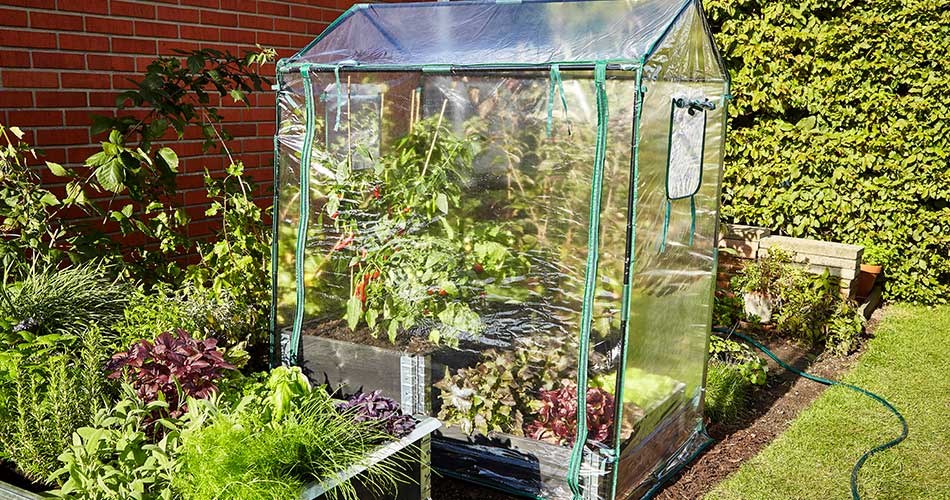
Planting tomatoes
Although many choose to grow tomato plants in greenhouses with capillary boxes, it can also easily be done in planter boxes and pots. The main thing is that you are able to plant the tomato seedling deep in the soil so that only half of the plant is visible above ground. If you use planter boxes or greenhouses, then be sure to plant at a distance of 50-100 centimetres so that they have room to grow.
Pre-sprouting organic vegetables
If you and your family have a passion for the environment, this is another good reason to grow your own vegetable plants. In this way, you can be sure that soil, seeds, fertiliser, and the vegetables you grow are organic.
Organic soil is free of synthetic pesticides and genetically modified organisms, which means that the vegetables you grow will be as natural as possible. Organic seeds come from plants grown without the use of artificial chemicals, and therefore they are healthier for both you and the environment. Organic fertilisers, often made from composted plant materials or animal waste, provide nutrients to the soil in a natural way, helping your plants grow strong and healthy.
Pre-sprouting with organic materials requires the same amount of water, light, and general care as non-organic pre-sprouting. The basic needs of a budding plant remain the same regardless of whether the materials used are organic.
Get more good gardening tips at Biltema
At Biltema we have a whole universe of gardening, tips that you can dive into if you want to get more control of your garden. For example, learn how to maintain your garden’s lawn so it always looks great, as well as how to get rid of fast-growing weeds.
But it doesn’t end there. Biltema has also created an indispensable Guide to Fighting Pests that threaten your planter boxes. That way, you won’t need to worry about pests ruining your pre-sprouting and cultivation work.
Want gardening tips for every month, all year? Then take a look at Biltema’s garden calendar.

